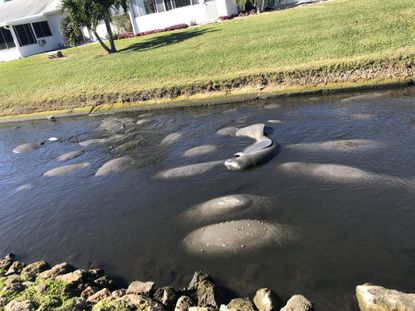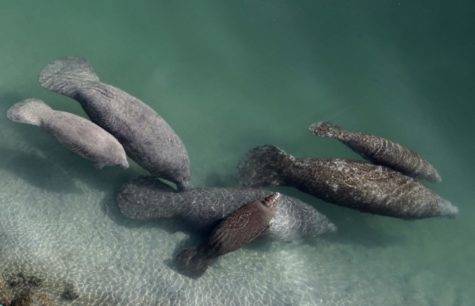Manatees Deaths In Florida: Environmental Issue
March 31, 2021
Many things have happened in this past year, but there are bigger problems that are coming up. One problem is the record number of manatee deaths in Florida. Because of the cold weather and a decline in seagrass because of the contaminated waterways, manatees are dying. This is the first time where Florida has seen the numbers this high for the death of the manatees. The number of deaths of manatees this year is 432, which was three times the average of 146 manatees between January 1 and March 1. Last year, the state recorded 637 manatee deaths, and in 2019, 607 manatees reported dead.

“It’s this combination we have of cold weather, we have a reduction of where manatees can go, and in the places where manatees can go, because of human development and other activities, we have poor water quality which has resulted in these grass die-offs,” said Jaclyn Lopez, Florida director of the Center for Biological Diversity.
The largest number of deaths is in Brevard County, with 179, the newspaper reported. Many of those deaths happened along the Indian River, which is a warm water gathering place, officials said. The manatees swim away to eat seagrass, which is their major source of food. If they aren’t finding as much, they return hungrily to the warmer water. “A manatee will choose starvation over freezing to death,” Lopez said. The officials said cold stress was about 41 deaths.

There were 52 cold-stress deaths for the manatees in 2020, officials said. Patrick Rose, who is an aquatic biologist and executive director of the Save the Manatee Club, told the SunSentinel that manatees would stay in the Banana River or Mosquito Lagoon.
The Banana River of Mosquito Lagoon is at the northern end of the Indian River Lagoon. Losing seagrass is forcing them into other areas. The southern end of the Indian River Lagoon has suffered from a series of algal blooms and phytoplankton blooms, and the infusion of fresh water and nutrients from Lake Okeechobee has stressed that system and wiped out much of its seagrass, the newspaper reported. Rose said there are probably more manatee deaths than the state has documented, and it might not accurately attribute the causes.


